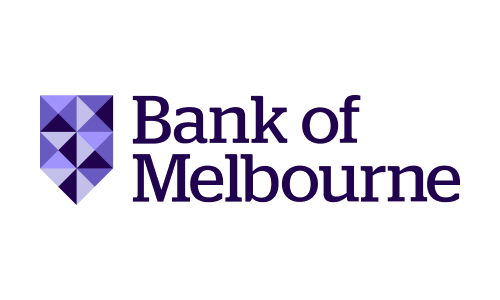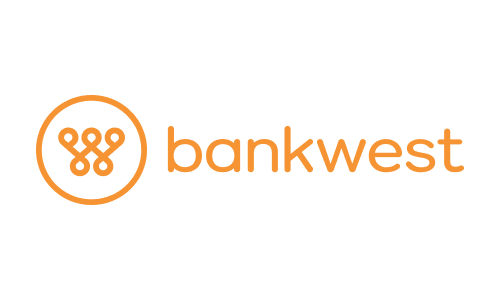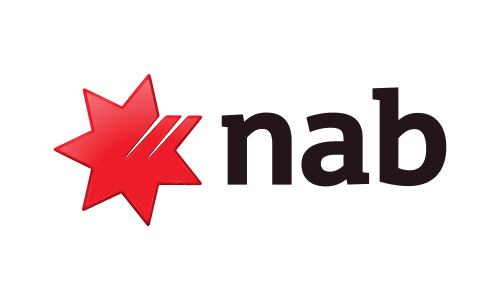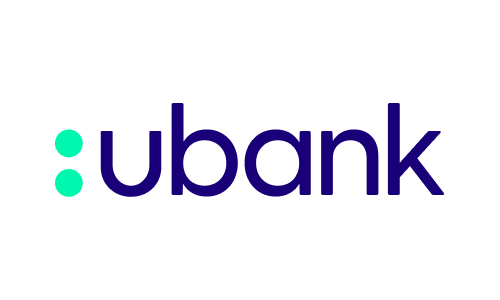Refinance your home loan
Compare your options and refinance your home loan, all in the one place



















We do not compare all brands in the market, or all products offered by all brands. At times certain brands or products may not be available or offered to you. Learn more.
Top 3 things to know about refinancing home loans

We believe the best decisions start with a comparison.
We’re proud to have helped millions of Aussies look for a better deal.


How to refinance your home loan
Updated 8 Jan 2025How to refinance a home loan



Hi, I’m Andrew Winter, host of Selling Houses Australia.
Are you unhappy with your current home loan? Maybe the interest rate isn’t a bargain anymore,
or you’d like to change to a different kind of home loan.
Well the good news is that it may be possible for you to change from
one home loan to another – it can even be with a completely different lender!
This process is called refinancing, and it can be an invaluable strategy for making
sure your home loan matches your financial priorities, instead of deciding them for you.
Refinancing is basically taking your home loan and giving it a different set of rules to play by.
You might be looking for a lower rate, more attractive fees, or a different kind of home loan altogether.
Whatever you are looking for in a home loan, you’ll have to find it first, and then apply
to refinance to that particular home loan. Unfortunately, depending on your lender and the
type of refinancing you’re looking to do, you may incur a range of costs including discharge fees,
application fees, and potentially break fees. So, what do the different types of refinancing
look like? Well, you can refinance internally (with your current lender)
or externally (with a different lender). Before you decide the grass is greener elsewhere,
check with your current lender to see what they might have to offer.
But if they can’t offer you a better rate or you are unhappy with their services,
you may want to start looking further afield. It’s worth mentioning that the process of
refinancing can be quite complex – it sometimes feels a bit like applying for a home loan all over
again, as the lender will need to re-assess your finances to make sure you can repay the new debt.
And anyone who’s applied for a home loan before can tell you finding the right one
is hard work; after all, you’ll have the whole market at your fingertips!
But who better to help you compare the market than well, Compare the Market!
You can compare based on rates, fees, features and more, and their on-call home loan specialists
can help you with any questions you might have, as well as guide you through the application process
if you’ve found the right home loan for you. So go on and get comparing!
Expert tips for refinancing home loans
Our General Manager of Money, Stephen Zeller, has some handy tips for any property owners thinking of refinancing:

Be proactive, not reactive
If you’re thinking of refinancing because of a forecast rate hike or your fixed-rate period is ending soon, act sooner rather than later! Otherwise, you could end up repaying more than you’d like to if you don’t manage to refinance in time.
A bridge to better loan features
If you intentionally chose a ‘no-frills’ option for your first home loan in order to keep costs down, you might now be in a place where you could afford a more feature-packed home loan type. If that’s the case, refinancing could be a way to ‘upgrade’ your home loan from something basic to something that make your money work harder for you.
Our mortgage brokers are here to help!
Review your home loan annually by completing a ‘Home Loan Health Check’. Feel free to reach out to our expert team of mortgage brokers who can assist with reviewing your current home loan to see if they can help you save money and pay off your home loan sooner rather than later; best of all, this will cost you nothing!
Find out more about refinancing
What is refinancing a home loan?
Understanding refinancing home loans

Refinancing is the process of replacing your existing home loan with another, ostensibly ‘better’ home loan from a different financial institution. The balance of your home loan will carry across, but it will be subject to different terms, rates, and fees according to the conditions of your new loan.
Refinancing can be a good way to take advantage of currently low interest rates, or to consolidate several different debts into your home loan. For example, if you have a credit card debt or personal loan, that liability will likely have a double-digit interest rate attached – whereas if you were to roll that same debt into your home loan, it’d then be on your single-digit home loan interest rate.
How does refinancing a home loan work?
The first step when looking to refinance is checking what kinds of fees your current lender might charge you for switching home loans and what the process involves. Depending on your existing lender and home loan, you may have to pay a break fee or lender costs to refinance.
Once you’ve figured out what your refinancing costs might look like, you’ll want to compare a wide range of home loan options from different lenders to determine which ones could suit you. Once you’ve found one you like with a home loan rate that works for you, you can apply to refinance your existing loan.
Refinancing will generally involve receiving formal approval from your new lender, then sending a discharge form to your old lender to notify them of your refinance and which lender to release your home loan to.
Why refinance your home loan?
Refinancing lets you swap your current home loan product for a new one, which can come with a whole slew of potential benefits including:
- A better interest rate. Shopping around affords you the luxury of finding a home loan with a lower interest rate.
- Avoiding a high revert rate. Fixed rate and introductory-period loans generally revert to a standard variable interest rate after a pre-determined amount of time, which is often much higher than the market average rate. Consider reviewing your fixed interest rate a month or two prior to the end of the fixed rate period, but be aware that you may pay a break fee when refinancing a fixed rate home loan.
- Access to more loan features. Your current home loan may not offer the features that you now might find useful such as an offset account, redraw facility, the option to split your loan or the ability to make additional repayments. By shopping around and refinancing, you can end up with a home loan that has the features you want.
- Debt consolidation. If you have an array of outstanding loans with higher interest rates than your home loan, you could consider refinancing in order to consolidate all of your debt into the one loan, with a lower interest rate. However it’s worth noting that you may pay significantly more in interest charges over the life of your home loan if you consolidate your debts in this way.
- Adaptability and flexibility. Refinancing gives you an opportunity to reassess your loan term and home loan repayment frequency, along with your ability to make extra repayments. If done smartly, this could potentially save you money over the life of the loan.
How to refinance a home loan
Generally, the process to refinance a home will involve the following steps:
- Research
Find out the details of your home loan, including your current interest rate and mortgage repayments, as well as your potential break costs, and determine what changes could assist you in meeting your personal and financial goals.
- Compare
Use our home loan comparison tool to assess your options and look for a great-value product based on its rates, fees, features and more. Remember to check the comparison rate!
- Speak to an expert
Our expert mortgage brokers can answer some of the burning questions you might have about refinancing.
- Get a free property report
In order to get a solid idea of your property value, you can get a free report via our property report service. You’ll get the property’s current estimated value, along with comparable recent sales in the area to give you an idea of what properties like yours are selling for nearby.
- Application time
If you’re ready to apply for your home loan refinance, we can help you with that. Our online home loan comparison service lets you compare a variety of home loans from a range of lenders, and if you find one you like, one of our expert mortgage brokers can help you apply for it, entirely online!
- Approval
Receive unconditional approval from a lender to refinance.
- Completion of documentation
Your new lender will send you a set of documents – including the contract for your new home loan – for you to complete and sign. Once the lender has received and approved the completed documentation, you’ll be able to proceed to settlement.
- Settlement
When refinancing, your new lender will replace the old lender on the title deeds to the home and pay out the old lender’s loan amount with the new loan funds.
How soon can you refinance a home loan?
You can usually refinance your mortgage at any time, though it’s generally a good idea to have at least 20% equity in your property before refinancing – and subsequently a loan-to-value ratio (LVR) smaller than 80% in order to avoid paying lenders mortgage insurance (LMI).
If you’re on a fixed interest rate home loan, you may want to wait until your fixed term expires before doing so in order to avoid expensive break fees. If you’re on a variable rate home loan, you’ll typically pay less in fees when refinancing.
How long does refinancing take?
The length of the refinancing process can depend on your lender. Some may get it done in as little as two to three weeks while others will take a bit longer, sometimes up to 60 days or more.
How often should you refinance your home loan?
Hypothetically speaking, you can refinance your home loan whenever there’s a better rate on offer – but you’ll want to make sure that the costs of refinancing don’t outweigh the benefits, and that you have sufficient equity to refinance without paying LMI (i.e. 20%).
To put it another way, you should refinance as often as it financially benefits you to. You might refinance three times in one decade and once in the next decade, depending on your personal financial circumstances and the movements of the home loan interest rate market.
For more tailored advice on when refinancing could benefit you, you may want to consider speaking to a financial advisor or one of our mortgage brokers.
The costs of refinancing a home loan
How much does it cost to refinance a home loan?

Refinancing will never be free, but the costs will vary depending on the specificities of your financial situation and what your refinance looks like.
Some common costs may include:
- Discharge fee or settlement fee. An administration fee that covers your current lender’s costs.
- Application fees. An upfront fee for processing and assessing a new loan application.
- Valuation fee. A fee that covers the costs of valuing your property.
- Mortgage registration fee. The cost for registering the lender’s mortgage on your property’s title.
- This is generally only applicable for loans with an LVR greater than 80%. LMI protects the lender, not you, in the event that you can’t afford to make your fortnightly or monthly repayments.
- Ongoing fees. Regular administration and account-keeping fees that can be annual or monthly. These may be higher if you have a ‘package’ home loan that includes a credit card or offset account.
- Break or exit fees. A penalty fee that may be charged by your current lender for terminating a fixed rate loan contract early (i.e. prior to the end of the stipulated fixed rate period). Not applicable for home loans with variable interest rates, but may apply to the fixed rate component of a split rate home loan.
- Additional costs. These may include costs for title searches, surveys and more.
Check the terms and conditions of your home loan for a breakdown of the fees and changes that may be applicable.
Do I need to pay stamp duty again when refinancing?
Stamp duty is a type of tax imposed by states and territories during the sale of a property and is therefore not a home loan cost, but rather a home buying cost. Since refinancing involves switching home loans, you will generally not have to pay stamp duty when refinancing.
A possible exception to this is if the title of the property or ownership details are changing. If the name of the borrower changes, stamp duty may then apply. Mortgage registration fees can also apply.
Speak to one of our expert mortgage brokers or your state’s relevant revenue office for more information on stamp duty.
How much equity do you need to refinance?
When it comes to refinancing, you won’t need a traditional deposit, but what you will need is equity in your current home – equity meaning the portion of your home you ‘own’ based on how much you’ve made in home loan principal repayments.
It’s usually a good idea to refinance with at least 20% equity in your home to avoid having to pay LMI. The better your credit and the more equity you have in your home, the better the chance there is that you’ll get an improved deal and be charged a lower rate. If you have less than 20% equity, you will most likely need to pay LMI again as this isn’t transferrable between lenders.
Does refinancing affect credit score?
Unless you’re a serial refinancer, refinancing your home loan will generally have minimal impact on your credit score if you haven’t applied for any other finance or credit recently. A formal credit enquiry is required when refinancing, and it will stay on your credit history for five years.
Maintaining a healthy credit file is largely based on making repayments as scheduled on your new home loan, and on any other debts you might have (such as a credit card or personal loan). All enquiries for credit will typically leave a hit on your file, and too many enquiries can also lower your credit score.
It’s important to note that credit reporting bodies do not distinguish between successful and unsuccessful applications for the purposes of assessing your credit score. What matters is the volume of applications you’re lodging, and the number of recent enquiries on your credit history, as a large number of enquiries in a short period of time can very quickly devastate your credit score.
One of our expert mortgage brokers can review your credit report (without impacting your credit score) before you submit any home loan applications.
Important to know
What to consider when refinancing

There are several factors that you may want to consider and steps you may want to take before deciding to refinance, including:
- Speaking to one of our mortgage brokers. One of our expert mortgage brokers can run a home loan health check for you, to see if they can find you find a lower rate option.
- The cost of refinancing your home loan. Check which break penalties, exit fees and legal fees you may be on the hook for if you refinance, and investigate which fees the new lender is likely to charge you during the application process (e.g. application fees).
- Compare the costs. Consider if the costs of refinancing (like your old loan’s break fees and the new loan’s administrative fees and additional costs) outweigh any perceived benefits of refinancing. For example, it might be worth paying a break fee if you can save thousands of dollars over the life of the loan through lower interest rates, lower annual fees and a different repayment frequency. However, if it’s going to cost you more than you could save to refinance, it may not be the right move at this point in time.
- Your current LVR and whether or not you require LMI. You can’t transfer LMI to another lender as it’s an insurance policy designed to cover only the lender. So, if your LVR is higher than 80%, you’ll have to sort out LMI all over again.
The pros and cons of refinancing
| Pros | Cons |
|---|---|
|
|
Do I need a conveyancer or lawyer to refinance?
You generally won’t need the assistance of a conveyancer or lawyer in order to refinance, as they typically only get involved with sales contracts and the settlement process. If you’re simply changing home loan contracts, there’ll be no need for a lawyer or conveyancer.
However, as a home loan contract is a legal document, you may feel more comfortable having it reviewed by a legal professional. Keep in mind, however, that this will add to your total home loan costs.
Meet our home loans expert, Stephen Zeller
Stephen has more than 30 years of experience in the financial services industry and holds a Certificate IV in Finance and Mortgage Broking. He’s also a member of both the Australian and New Zealand Institute of Insurance and Finance (ANZIIF) and the Mortgage and Finance Association of Australia (MFAA).
Stephen leads our team of Mortgage Brokers, and reviews and contributes to Compare the Market’s banking-related content to ensure it’s as helpful and empowering as possible for our readers.




